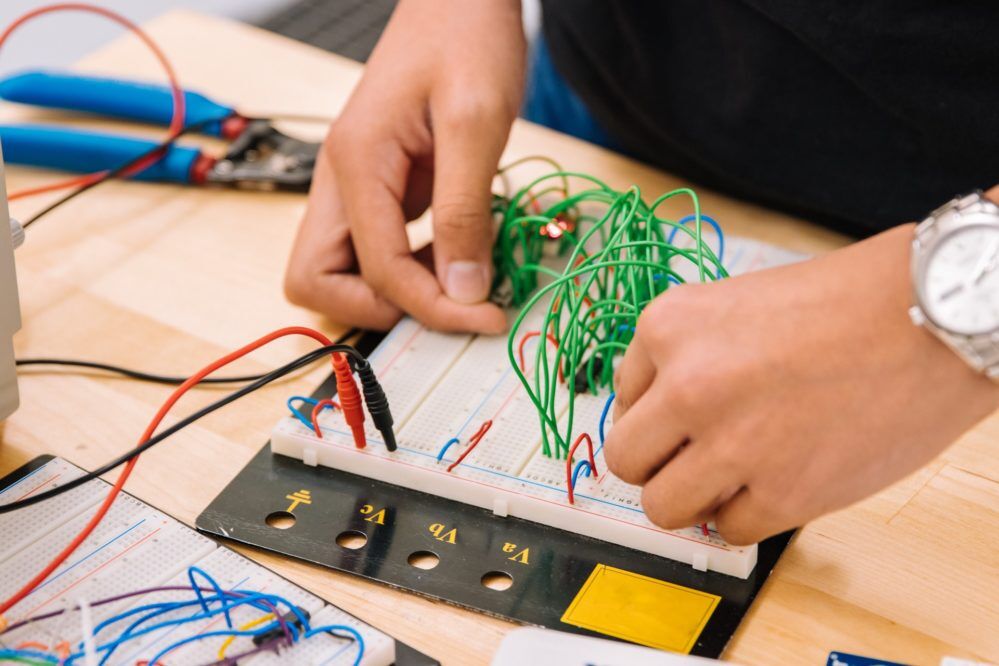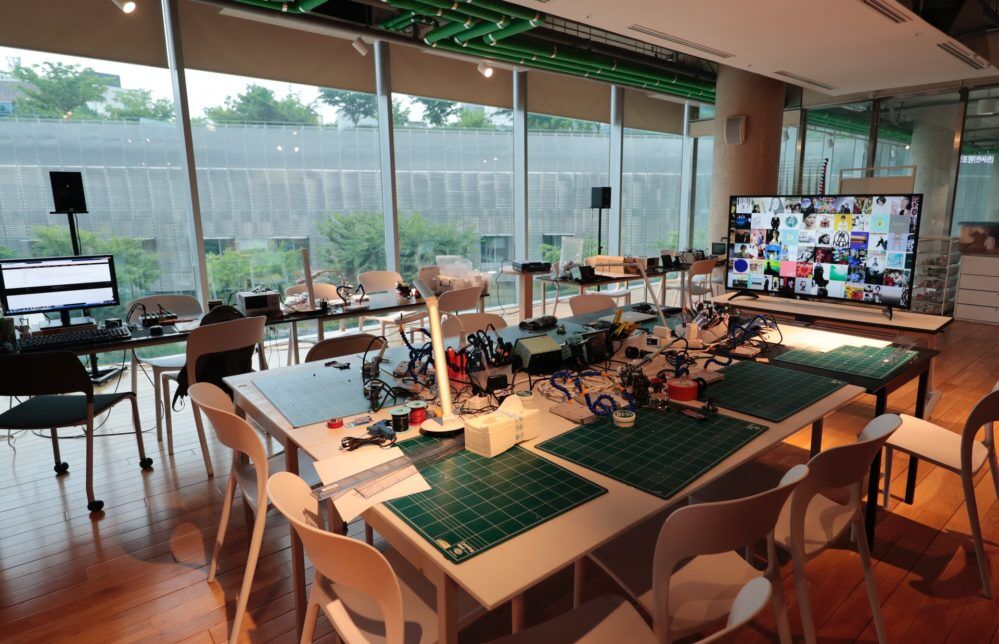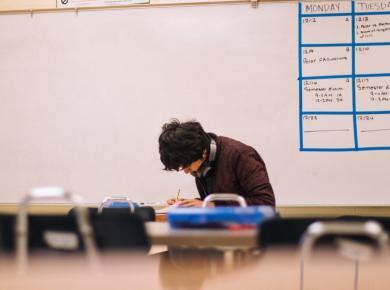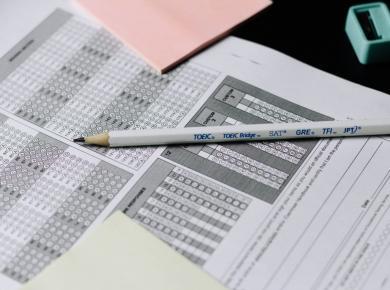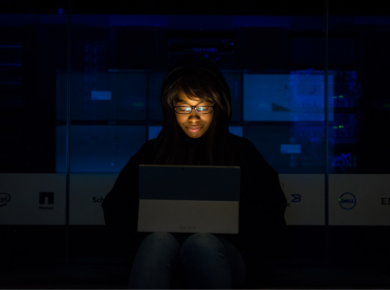Table of Contents
- What Is Kinesthetic Learning?
- What Is a Kinesthetic Learner?
- How Do Kinesthetic Learners Learn?
- Characteristics of Kinesthetic Learners
- Benefits Of Kinesthetic Learning
- Teaching Methods For Kinesthetic Learners
- The Bottom Line
- Frequently Asked Questions (FAQs)
- How can I identify a kinesthetic learner?
- What are some effective teaching strategies for kinesthetic learners?
- Are kinesthetic learners less capable of traditional learning methods?
- Can someone be a combination of learning styles?
- How can kinesthetic learners succeed in a traditional classroom setting?
Have you ever seen someone doodling while listening to a lecture in class? What if we tell you that that can help some people learn better? This type of learning has long-term benefits as well.
Through kinesthetic learning, mind and body are combined to achieve the best learning results. If you are now wondering, “What is kinesthetic learning?” or, “What is a kinesthetic learner”? – this article is for you.
Read on to learn more about kinesthetic learning, its characteristics, benefits, and strategies to implement when teaching such learners.
What Is Kinesthetic Learning?
Before we try and define what kinesthetic learning is, let’s first check the definition of the word ‘kinesthesia’. The Cambridge Dictionary defines kinesthesia as ‘the ability to know where the parts of your body are and how they are moving.’
Kinesthetic learning links the process of learning to physical activity. It is a learning style during which the learner has to feel or move in order to learn more effectively. Also referred to as ‘tactile’, ‘hands-on’, or ‘physical’ learning, kinesthetic learning is part of the VARK model. The latter consists of three other main learning styles: visual, auditory, and read and write.
What Is a Kinesthetic Learner?
A kinesthetic learner would rather perform physical activity to learn something, as an active participant, instead of passively listening to a lecture or watching a demonstration. That is why the best way of learning something new is by having your hands-on those things you are trying to learn.
Kinesthetic learners use body movement and interact with their environments when learning. To better understand something, they need to touch or feel it; hence practical information is usually preferred over theoretical concepts.
How Do Kinesthetic Learners Learn?
A kinesthetic learning experience can be that of learning how to skate. You can read about it, listen to instructions, or watch videos of how to skate—but deep learning occurs when you’re physically involved and start ‘doing’ it.
For example, when learning about wind energy, a visual learner might learn how wind turbines function by watching a video, a kinesthetic learner would prefer to build a pinwheel and make connections between the pinwheel and wind turbines to learn more about how wind energy works.
Therefore, kinesthetic learners learn easier in classes that incorporate practical examples into the curriculum rather than through lectures.
Characteristics of Kinesthetic Learners
Kinesthetic learners retain information by doing, rather than (only) by seeing or listening. When they engage in some physical activity during learning, that’s when you can expect the best learning outcome.
From an early age, they will show interest in building sets; and they will often tear things apart in order to learn more about them. When a child wants to touch and hold something they are interested in rather than look at it, most probably your child is a kinesthetic learner.
Some typical kinesthetic learner characteristics include:
- Understand more when learning through hands-on experience
- Tend to get bored in a traditional classroom
- Learn through movement
- Enjoy sports and physical activity
- Enjoy being outside the classroom when learning (field trips, expeditions)
- Like to build things and work with their hands
- Love experimenting and testing things
- Tend to use their hands when talking
- Enjoy working with tools or instruments
- Love trying new things
- Tend to trust what they can experience or perform
- Remember spelling words better when they write them several times
- Tend to gesture while speaking
- Tend to be killed at solving puzzles and completing mazes.
- Think more clearly when able to move
- Tend to need frequent study breaks to keep focus
- Prefer making posters or charts for group projects rather than gathering information
Benefits Of Kinesthetic Learning
Kinesthetic learning is a style of learning through which students are physically interacting with the material. Therefore, this style shares many beneficial elements frequently observed in active learning. Some of the many benefits of kinesthetic learning include the development of various skills, knowledge, and critical thinking.
1. Cognitive development
Research conducted on the brain reveals that thinking and movement are connected. This connection between cognitive and motor processes happens due to the fact that movement increases the amount of oxygen present in your blood which then helps fuel the brain. So, physical activity helps the brain positively affect your cognitive performance.
2. Increased comprehension through physical activities
Generally, lectures are delivered in a teacher-centered format, causing students, especially those who utilize kinesthetic learning, to reach only basic levels of comprehension because they do not interact with the material physically. So, to support the cognitive development of such students, the inclusion of kinesthetic strategies and techniques is necessary and highly beneficial.
3. Social skills development
When you participate in creative kinesthetic activities, one of the skills you will further develop is that of communication. Being around other people while engaging in kinesthetic activities, like group roleplaying, will help promote positive social interactions that teach you about teamwork and cooperation.
4. Stronger creative thinking
Creativity is closely linked to the kinesthetic type of learning. While participating in different learning activities, you usually need creative thinking to be able to grasp more from that particular activity.
Learners often explore their creativity by approaching learning from different perspectives when learning using the kinesthetic style, which in return contributes to an overall more robust creative thinking.
5. Better problem solving
Kinesthetic learning helps critical and analytical thinking skills, which improves through experimentation with various techniques and strategies in interacting with studies. The kinesthetic learning style encourages students to be active in the study process and find new ways of solving problems instead of being passive and simply observing demonstrations or listening to theories.
6. Better observation
Having a hands-on approach to your studies will help you skillfully engage with your surroundings and materials, making you a better observer of any change and easing the process of noticing unique features. Generally, ways to improve observation skills include being concentrated, engaged, and interactive with the information—all of which you can achieve through kinesthetic learning if it is your style.
Teaching Methods For Kinesthetic Learners
For teachers, understanding the ways in which students retain information is crucial for effective teaching. With kinesthetic learners preferring physical engagement when learning something, various strategies can be implemented by the teacher in order to help them learn. Below you can find some teaching methods to ensure effective learning for kinesthetic learners.
✅ Request information on BAU's programs TODAY!
Include a variety of kinesthetic-friendly activities
Since kinesthetic learners tend to get bored and can’t focus long on a traditional lecture, try keeping your lectures as short as possible. Instead, try to include different activities such as surveys, roleplays, demonstrations, dances, projects, experiments, and more.
You can ask learners to work in pairs or make small groups moving their chairs to work together on a particular assignment. Introducing various activities in the class keeps kinesthetic learners from getting bored while also helping them learn.
Allow them to move
Some teachers find standing during lectures unacceptable, but did you know that it is beneficial for some students? Allowing kinesthetic learners to move in class helps them learn more efficiently. Standing, doodling, tapping the leg, and more – are all the types of movements that would help a physical learner focus and learn more quickly. In addition, if you see that the kinesthetic learners in your class are not able to focus during lectures, pause and have the class switch places, jump, stretch, or do something similar to get some energy.
Motivate them to create their notes
Creating their own notes using pen and paper, highlighting parts in a book or notebook, underlining different parts – helps kinesthetic learners remember information more. Choosing between colored pencils and highlighters is a mini activity that requires motion and encourages kinesthetic learners who are tired of sitting all day in class.
Teach outside
Whenever possible, or whenever you can make a connection to the lesson – teach outside of the classroom. Since learners understand best with real-life examples, you can take them outdoors, to a park or, the school backyard to learn plants. This way, they can touch the plants and feel them, instead of just reading about them and seeing pictures. Take the students outside to play different games or just observe. As a benefit, they will be actively learning.
Provide a practical component to the lessons
Since kinesthetic learners learn best by touch, whenever you can, offer your students things they can interact with physically. These include puzzles, blocks, and cubes, wooden numbers and letters, modeling clay, globes, maps, drawing materials, and more.
The Bottom Line
Knowing your primary learning style is crucial for successful learning. A kinesthetic learner is someone who learns best through physical activities, movement, and hands-on experiences. They thrive in learning environments that allow them to touch, feel, and manipulate objects to understand concepts.
If you are a teacher, hopefully this article can help you understand your students, identify your kinesthetic learners in your class and use the strategy list we provided, consisting of various teaching methods for kinesthetic learners.
Frequently Asked Questions (FAQs)
How can I identify a kinesthetic learner?
Kinesthetic learners often enjoy activities that involve physical movement, such as sports or dance. They fidget while sitting still, prefer to use gestures when speaking, and learn best through practice rather than just listening or reading.
What are some effective teaching strategies for kinesthetic learners?
To support kinesthetic learners, educators can incorporate activities like role-playing, experiments, building models, and interactive games. Providing opportunities for movement, such as allowing students to stand or use manipulatives, can also be beneficial.
Are kinesthetic learners less capable of traditional learning methods?
Not at all! Kinesthetic learners simply need different approaches to absorb information. While they might struggle with traditional lecture-based learning, they can excel in environments that allow for active participation and practical application.
Can someone be a combination of learning styles?
Yes, many people have a mix of learning styles. A person can identify primarily as a kinesthetic learner but also use visual or auditory methods effectively. It’s important to recognize and cater to the various ways an individual learns best.
How can kinesthetic learners succeed in a traditional classroom setting?
Kinesthetic learners can thrive by advocating for their needs, using tools like stress balls or standing desks, and incorporating movement breaks into their study routines. They might also benefit from group work where they can engage with peers actively.

